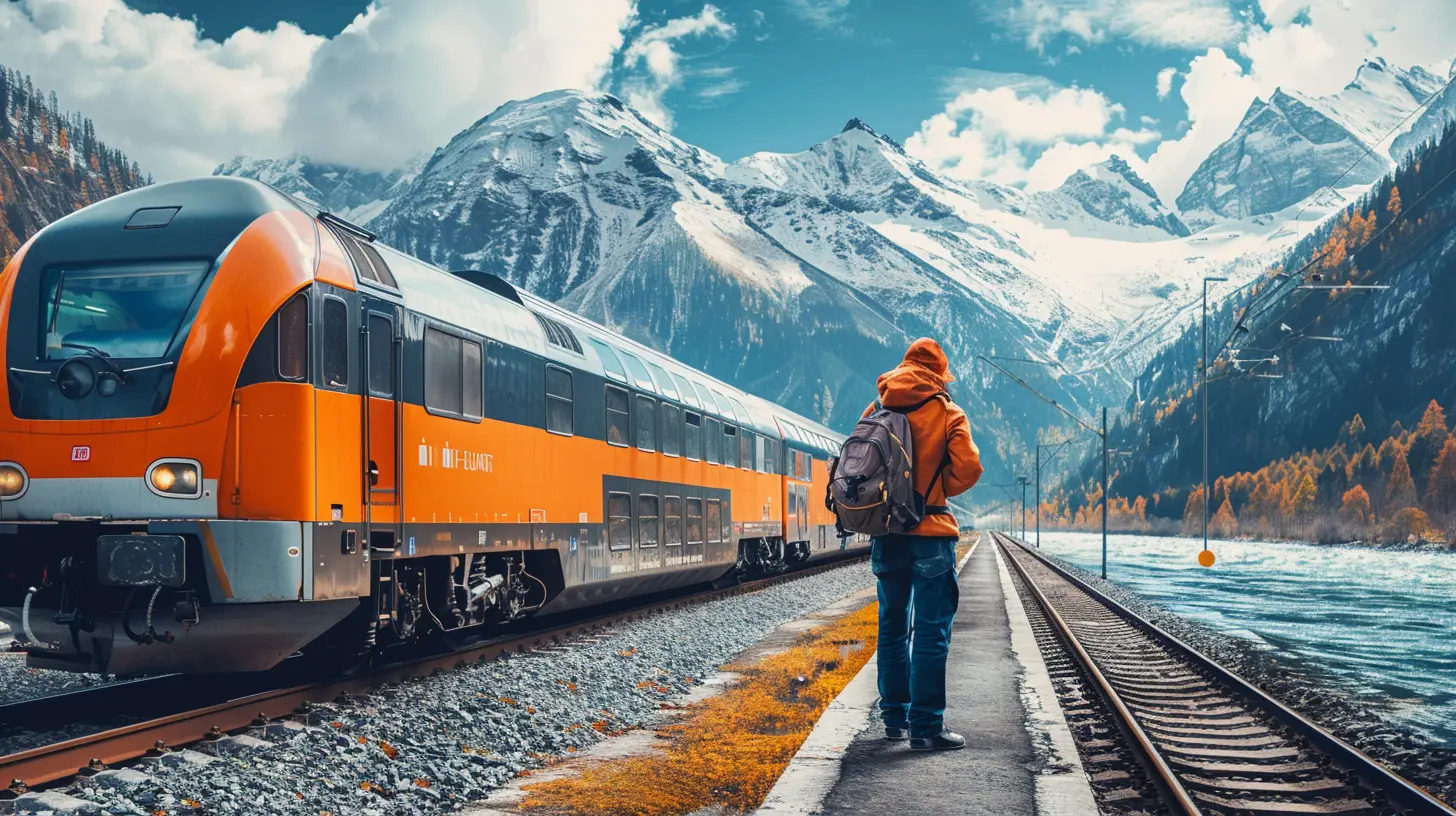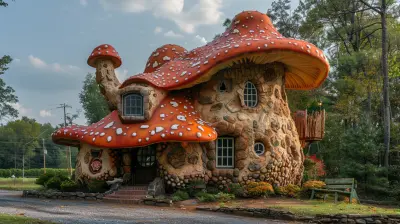Sustainable Travel: How Trains are Changing the Way We Explore
9 September 2025
Traveling is more than just moving from one place to another—it's about experiencing new cultures, landscapes, and people. But in an age where climate change and sustainability are at the forefront of global concerns, the way we travel matters more than ever. Enter train travel, an age-old mode of transportation that's making a huge comeback for all the right reasons. In this article, we’ll dive into why trains are becoming the go-to choice for sustainable travel and how they’re changing the way we explore the world. 
Why Sustainable Travel Matters
Before we jump into the benefits of train travel, let's talk about why sustainability in travel is such a big deal. Tourism is responsible for nearly 8% of global carbon emissions, with flights accounting for a large portion of that. The more we fly, the bigger our carbon footprint gets, which contributes to environmental problems like climate change and air pollution.But does that mean we should stop traveling altogether? Of course not! Instead, we need to rethink how we get from point A to point B. Choosing eco-friendly transport options—like trains—can help us continue exploring the world while reducing our impact on the environment. 
The Green Benefits of Traveling by Train
1. Lower Carbon Footprint
Compared to planes and cars, trains have a significantly smaller carbon footprint. A high-speed train emits about 14 grams of CO₂ per passenger per kilometer, while a plane emits 285 grams for the same distance. That’s a huge difference!By opting for trains over short-haul flights, travelers can cut down on carbon emissions drastically. Imagine if more people chose rail over air for trips under 500 miles—global emissions from travel would drop significantly!
2. Energy Efficiency at Its Best
Trains are incredibly energy-efficient. Unlike airplanes, which burn massive amounts of jet fuel, or cars, which rely on gasoline, modern trains often run on electricity. And with advancements in renewable energy, many rail networks are incorporating solar and wind power, making train travel even greener.3. Less Air and Noise Pollution
Planes release a lot more than just carbon—there’s nitrogen oxides, contrails, and even noise pollution. Cities near airports suffer from poor air quality and continuous noise from take-offs and landings. Trains, on the other hand, glide smoothly along tracks with minimal disturbance, making them a cleaner and quieter alternative.4. Reduced Land Use and Environmental Impact
Building highways and airports requires extensive land development, often leading to deforestation, habitat destruction, and urban sprawl. Train tracks, while still needing space, have a much smaller environmental impact compared to massive airport expansions or freeway construction.With high-speed rail networks, countries can improve connectivity without sacrificing large areas of natural land. 
Trains vs. Other Modes of Transportation
To really appreciate how sustainable trains are, let’s compare them to other common travel options:| Mode of Transport | CO₂ Emissions (grams per passenger km) | Environmental Impact | Sustainability Rank |
|------------------|----------------------------------|--------------------|------------------|
| Plane | 285 | High | Low |
| Car | 158 | Medium | Medium |
| Bus | 68 | Medium-Low | High |
| Train | 14 | Low | Very High |
Clearly, trains top the sustainability chart when compared to planes and cars. 
How Train Travel is Changing the Way We Explore
Not only are trains more eco-friendly, but they also offer a completely different way to experience travel. Unlike flights, which are all about speed, train journeys are about the experience. Here's how trains are reshaping the way we explore:1. Slow Travel and Scenic Routes
One of the best parts of train travel is the journey itself. Instead of spending hours in a cramped airplane cabin, trains allow you to relax, stretch out, and take in breathtaking views along the way.Imagine rolling through the snow-capped peaks of the Swiss Alps, gliding past the picturesque vineyards of France, or winding along the rugged coastlines of Scotland—these are experiences you simply don’t get when you fly.
2. Seamless City-to-City Connections
Most major train stations are located in city centers, making it easy to step off the train and start exploring right away. No need for long airport check-ins, baggage claims, or pricey taxi rides from far-off airports. You get straight to the heart of your destination, saving time and hassle.3. More Comfortable and Hassle-Free
Let's be real—air travel can be stressful. Long security lines, baggage fees, and the dreaded middle seat can take the joy out of traveling. Trains, on the other hand, offer:- Spacious seating
- No baggage restrictions (or hidden fees)
- The freedom to walk around
- Dining cars with real meals, not just tiny snack packs
It's travel the way it should be—comfortable, scenic, and stress-free.
4. Rail Passes and Budget-Friendly Travel
For budget travelers, rail passes like the Eurail Pass or Japan Rail Pass make exploring multiple cities affordable and convenient. Instead of expensive last-minute flights, rail passes offer flexible travel without breaking the bank.Plus, night trains allow you to save on hotel costs by sleeping onboard, making them a favorite for backpackers and adventure seekers.
The Future of Sustainable Train Travel
As more people recognize the benefits of train travel, governments and companies are investing in expanding rail networks. Here are a few exciting trends shaping the future:High-Speed Rail Expansion
Countries in Asia and Europe are leading the way in high-speed rail systems. Japan’s bullet trains, China’s vast rail network, and Europe's extensive connections are making train travel faster and more efficient than ever.Electrification and Renewable Energy
Many rail companies are shifting toward electric trains powered by renewable energy. For example, the Netherlands’ entire rail system runs on wind power. As more countries follow suit, train travel will become even greener.Night Trains are Making a Comeback
Sleeping on a train used to be a thing of the past, but night trains are making a huge comeback in Europe. With new routes connecting cities overnight, travelers can wake up in a new destination feeling refreshed and ready to go.How You Can Make Train Travel a Part of Your Journey
So, how can you incorporate trains into your travel plans? Here are a few simple tips:- Choose trains over short-haul flights whenever possible. If your destination is within 500 miles, taking a train is often just as fast when you factor in airport time.
- Plan ahead with rail passes to save money on multi-city trips.
- Opt for night trains to combine travel with accommodation and cut down on expenses.
- Try scenic train routes for an unforgettable travel experience—routes like the Rocky Mountaineer (Canada) or the Glacier Express (Switzerland) are must-sees!
Final Thoughts
Sustainable travel is no longer just a trend—it’s a necessity. If we want to continue exploring the world without harming it, we need to rethink our travel choices. Trains offer a greener, more enjoyable, and often more affordable alternative to flights. With comfortable seating, scenic views, and lower carbon emissions, they’re changing the way we travel for the better.So next time you're planning a trip, why not skip the plane and hop on a train instead? You’ll be making a choice that’s better for the planet—while still having the adventure of a lifetime.
all images in this post were generated using AI tools
Category:
Train TravelAuthor:

Ian Powell
Discussion
rate this article
1 comments
Jennifer McMahan
This article beautifully highlights the transformative role of trains in sustainable travel. It’s a reminder that exploring by rail not only reduces our carbon footprint but also allows us to connect more deeply with the landscapes we traverse.
September 9, 2025 at 4:54 AM

Ian Powell
Thank you! I'm glad you found the article insightful. Trains truly offer a unique perspective on sustainable travel.


